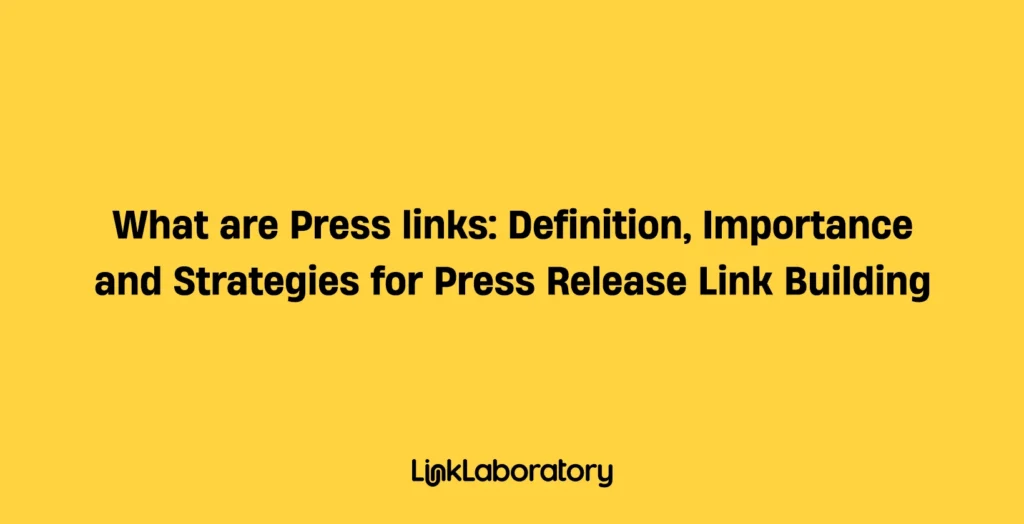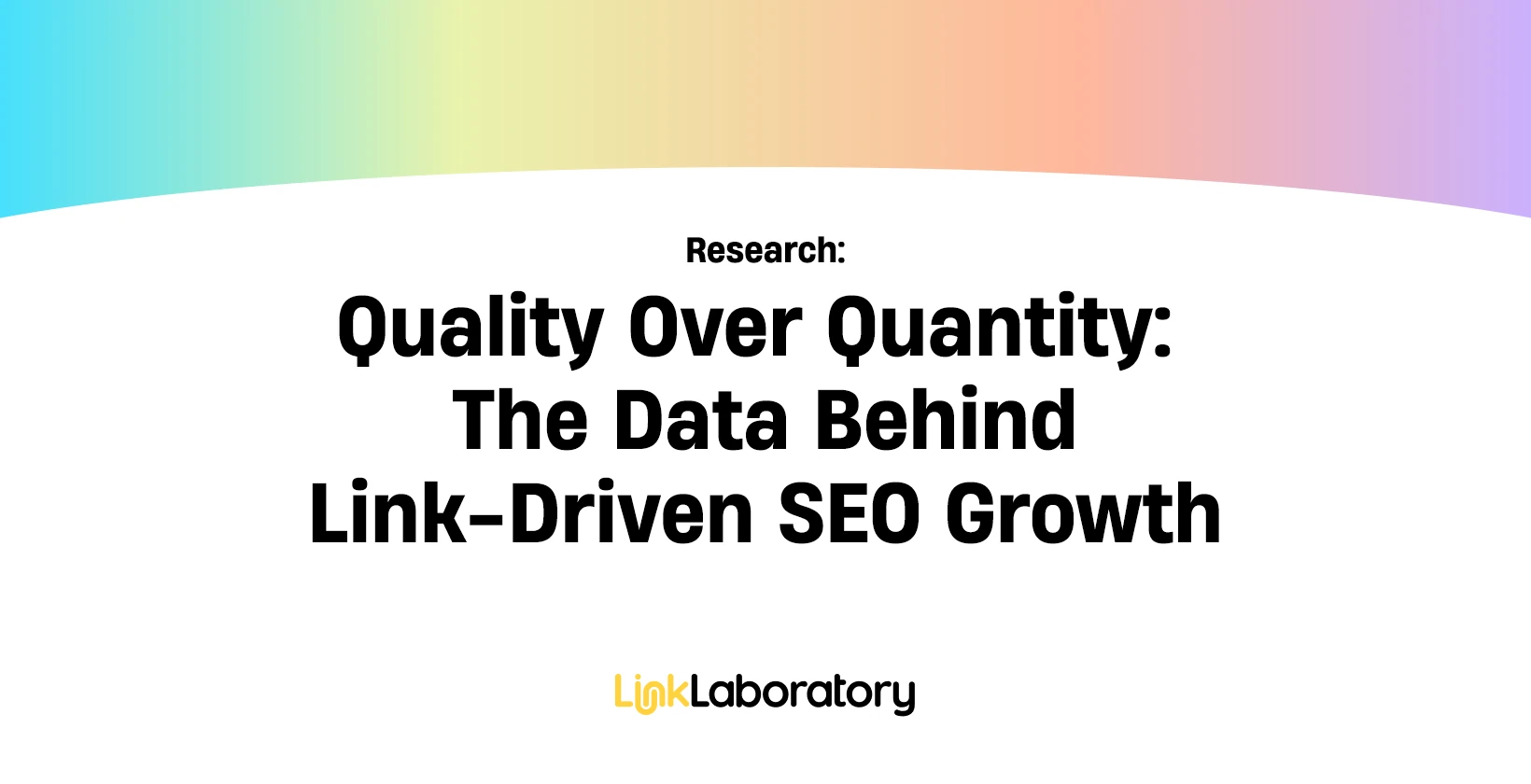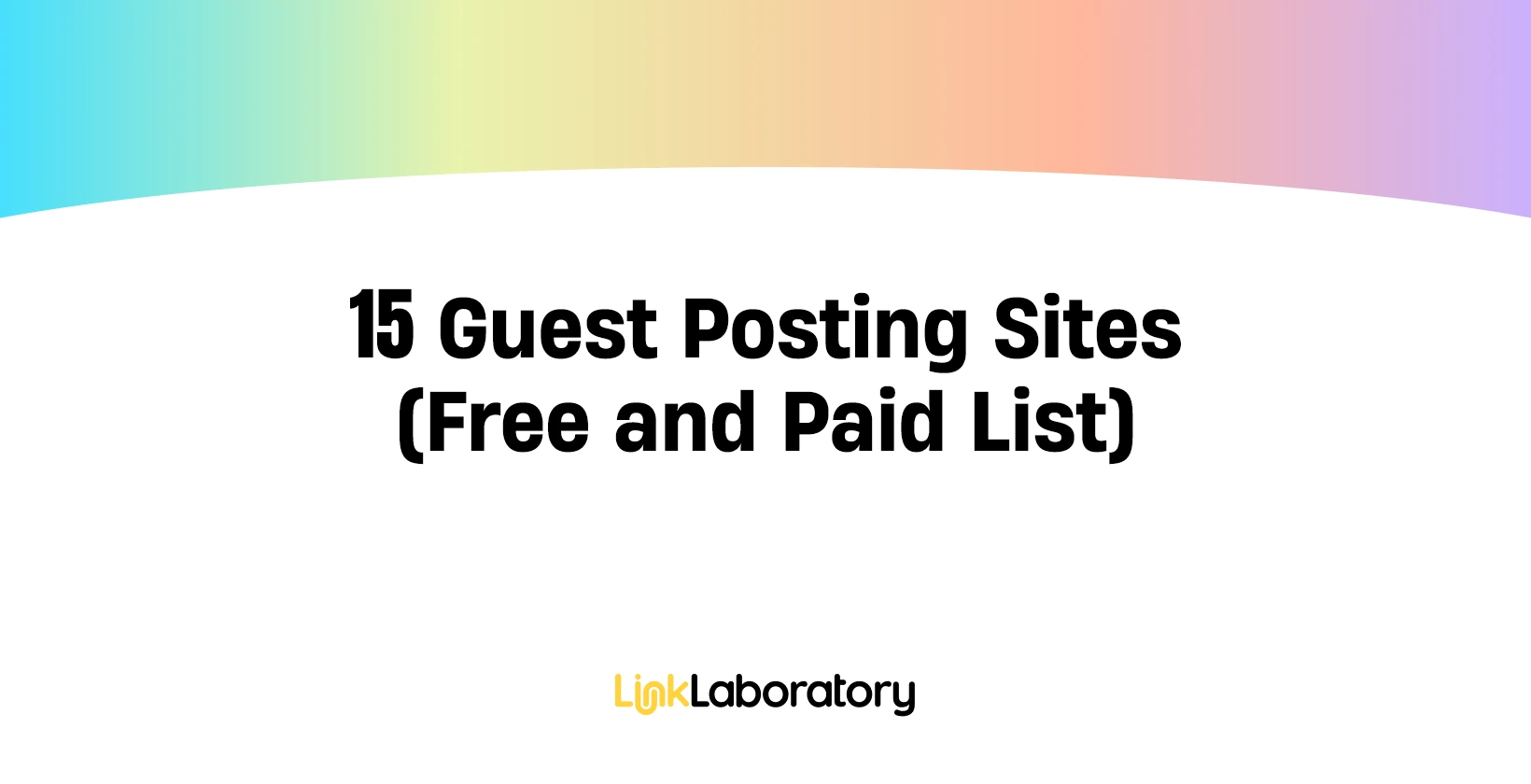Press links are backlinks embedded within press releases that point directly to a specific landing page, boosting website traffic and domain authority. Press links act as digital endorsements from authoritative publishers, creating immediate visibility and long-term search value. Press links represent one of the most credible and scalable forms of link acquisition, where public relations strategy intersects with search engine performance.
Unlike traditional backlinks earned through guest posting or directories, press links emerge from editorial judgment. A journalist chooses to reference a brand, product, or insight because the content holds inherent news value. Press links reflect real-world relevance, positioning the linked site as timely, trusted, and authoritative. Search engines reward this relevance with higher rankings, particularly when the referring domains carry strong editorial authority.
Digital PR link building transforms media attention into ranking power. Each earned link drives qualified referral traffic, improves topical authority, and increases brand exposure to audiences that matter. This article explores how to define, earn, and scale press links with precision. You will learn how to align your releases with journalistic standards, and turn editorial visibility into measurable SEO impact.
What are Press Links?
Press links are backlinks placed within news stories, press releases, or articles that point to a specific page on your website. Press links function as editorial endorsements, signaling to search engines and readers that the linked website holds informational or topical relevance. Press links originate from credible domains governed by strict editorial guidelines, making them a powerful indicator of authority in Google’s ranking systems.
There are two core types of press links. The first comes from genuine editorial coverage, where a journalist references your brand within a story based on its newsworthiness. These are high-quality, high-impact press links that influence rankings and brand perception. The second comes from syndicated press releases that appear on mass-distribution networks with minimal editorial review.
These press links lack authority and do not contribute to long-term SEO growth. Effective press link building focuses on securing the former through tailored outreach and story-driven content.
What is the Importance of Press Links?
The importance of press links lies in their ability to merge media authority with search performance to drive measurable growth across multiple digital channels. Press links are indicators of credibility, offering search engines tangible proof that your content holds informational value, industry relevance, and topical significance. A single backlink from a high-authority publication transmits trust equity that directly affects your ranking ability in competitive keyword spaces.
Press links enhance domain strength through context-rich citations. Press links from journalists carry algorithmic weight because they appear within stories crafted under professional editorial standards. This context signals to Google’s ranking systems that your website aligns with expert-driven content ecosystems. Websites that consistently earn press links benefit from improved crawl prioritization, higher domain authority, and broader indexation for semantically related queries.
Beyond technical SEO, press links function as gateways to referral traffic from relevant, high-intent audiences. A feature on a recognized publication increases the likelihood of click-throughs, conversions, and re-engagement. Unlike traffic spikes from ads, press-driven traffic compounds, feeding brand recognition while fueling long-tail visibility through natural sharing and syndication.
Press links establish narrative authority. When third-party sources repeatedly reference your content, products, or insights, your brand earns a place within the broader information landscape of your industry. This presence reinforces topical authority, satisfies E-E-A-T expectations, and positions your domain as a preferred source in the semantic network of search.
How to Get Press Links?
To get press links, you need to generate stories worth telling and deliver them through the right editorial channels. Press links originate from strategic content placement, editorial relationships, and targeted outreach. Each press link begins with a compelling hook, followed by strategic outreach. The process includes original storytelling, aligned distribution, and media relationships built on relevance.
The 7 main strategies to get high quality press links are detailed below.
1. Press Release Distribution
Press release distribution begins with newsworthy storytelling. Focus each press release on timely developments with clear relevance to your industry or audience. Journalists prioritize releases that introduce original data, executive insights, or product innovations that intersect with broader news cycles.
Structure your copy with clarity, embed precise facts, and write headlines that signal value for editors scanning wire services. Strong press releases create the foundational asset that supports further outreach and link acquisition.
2. Press Release Syndication
Press release syndication targets publications aligned with your subject matter. Distribute to industry-specific outlets, vertical news sites, and local media where contextual relevance and reader alignment increase the chance of editorial pickup.
Avoid broad syndication on low-value networks, and focus on syndication channels that offer editorial review, geographic targeting, or domain authority filtering. Strategic placement in these outlets raises your probability of earning editorial links from follow-up coverage.
3. Guest Posting
Guest posting offers direct access to high-authority editorial environments. Pitch well-researched, topic-aligned articles to blogs, magazines, or digital publications that accept external contributors. Prioritize publications where your expertise fits the content themes already ranking in search.
Use original analysis, case studies, or industry commentary to deliver value. Well-positioned guest posts often include a contextual backlink that drives both referral traffic and topic relevance.
4. Media Pitches
Media pitches convert ideas into editorial coverage. Build media lists by identifying journalists and contributors who have previously written about your subject. Craft tailored media pitches that offer exclusive angles, insights, or access. Editors respond to specificity.
Reference their previous work, explain why the story is timely, and position your brand as a trusted source. Personalized media outreach increases response rates and builds long-term relationships that result in repeat press mentions.
5. Email Targeting
Email targeting amplifies pitch distribution with precision. Segment your contacts by beat, location, and publication type. Use structured media outreach templates with dynamic fields for name, topic, and relevance to maintain personalization at scale.
Include a concise subject line, a one-paragraph summary of the story, and a clear call to action. Follow up with additional context, supporting material, or exclusivity options. This method turns cold outreach into actionable media interest.
6. HARO Link Building
HARO link building connects brands with journalists seeking sources. Respond to Help a Reporter Out queries with timely, qualified, and quotable answers. Match your responses to the tone and intent of the journalist’s question, and provide credentials that establish authority.
Keep submissions brief, direct, and tailored to the specific request. Journalists cite sources who simplify their research and contribute value to their stories. A successful HARO quote often includes a backlink in a high-authority publication.
7. Media Collaborations
Media collaborations open long-form opportunities for press link acquisition. Joint studies, expert roundups, influencer campaigns, celebrity endorsements, co-branded research, or live events give journalists more substance to write about. These assets generate deeper coverage and increase the number of referring domains linking back to your site.
Select collaboration partners whose reputation, audience, and SEO footprint expand your reach. A well-executed collaboration builds media exposure, amplifies link equity, and positions your brand at the center of industry conversations.
What is PR Link Building?
PR link building is the strategic use of public relations methods to acquire editorial backlinks from authoritative, trusted media sources. This technique integrates digital PR with SEO goals, using journalistic storytelling and reputation-based outreach to earn links that search engines interpret as authoritative signals.PR link building targets top-tier publications and media coverage that generate high-quality, editorially placed backlinks.This approach begins with creating original, newsworthy content that aligns with the current media landscape.
Brands publish data studies, expert analyses, and unique angles that journalists seek. The emphasis lies in content that fuels coverage, such as stories tied to cultural relevance, industry trends, or exclusive insights. Once the content is ready, digital PR specialists identify and pitch relevant journalists, editors, and producers. Media outreach focuses on media professionals covering aligned beats, and pitches offer concrete value.
Successful placements result in organic backlinks embedded within context-rich articles, strengthening the brand’s topical authority. PR link building outperforms other link acquisition strategies in quality and impact. Editorial links from trusted sources like business publications, national newspapers, and trade journals carry more ranking power and credibility than most other sources.
What is PR Quality in SEO?
PR quality in SEO refers to the measurable impact of digital public relations on a website’s authority, visibility, and rankings in organic search. PR quality evaluates how effectively PR activities generate high-authority backlinks, reinforce E-E-A-T signals, and build a credible digital presence. High PR quality reflects a strong alignment between newsworthy content and authoritative media placements that influence search engine trust.
Unlike traditional PR, which focuses on brand awareness, PR quality in SEO drives tangible ranking signals through strategic media coverage and link acquisition. PR quality prioritizes press links from relevant, trustworthy sources that pass editorial scrutiny and align with a site’s topical relevance. This quality focuses on link context, domain authority, source credibility, and placement integrity. High-quality digital PR campaigns contribute to a site’s topical authority, improve click-through potential, and increase branded search demand.
What are the Best Practices for Press Release Link Building?
The best practices for press release link building begin with crafting original, newsworthy content that delivers genuine value to journalists and audiences. Prioritize relevance over frequency, and anchor every release in a compelling, timely announcement supported by credible data or unique insight. Integrate one or two contextual links that enrich the narrative and guide readers to authoritative, relevant landing pages.
Use descriptive anchor text that clarifies the destination without over-optimizing for keywords. Position links naturally within the body of the release. Avoid promotional phrasing or excessive linking, which can flag your release as spam. Support claims with factual references and cite primary sources with outbound links where appropriate. Build trust through expert quotes and thought leadership commentary, offering perspectives journalists find worth amplifying.
Personalize each pitch with a clear connection to the journalist’s beat and recent work. Incorporate visual media and a strong call to action to increase engagement and link attribution. Promote your release through branded campaigns, social signals, and timely newsjacking strategies to boost visibility and inspire organic linking.
Track every campaign’s performance through referral traffic, link placement, and domain authority metrics. Use these insights to refine your outreach cadence, content format, and link strategy. High-performing press release link building operates at the intersection of storycraft, technical SEO, and public relations precision.
Are Press Releases Good for SEO?
Yes, press releases are good for SEO when executed with precision, relevance, and strategic distribution. Press releases amplify online visibility, generate authoritative backlinks, and drive referral traffic from trusted media sources. Each element contributes to the strength of your domain profile and signals brand legitimacy to search engines. Effective press releases create exposure by earning placements on high-authority domains. These placements lead to contextual backlinks, which improve your site’s authority and help search engines understand your topical relevance.
Referral traffic from media placements introduces qualified visitors and reduces bounce rates, which are secondary signals in SEO evaluations. Keyword-optimized headlines, metadata, and body copy align your release with topical search queries. Embedded links in the narrative, placed with semantic relevance and natural anchor text, drive human engagement and crawler clarity. Press releases published on local directories or industry-specific platforms build citation consistency, which is essential for local SEO.
Journalist coverage and press release syndication further multiplies link equity and brand mentions. High-quality content, visual assets, and data-rich storytelling increase pick-up rates, expanding your link footprint beyond the initial distribution. A well-executed press release strategy supports direct traffic growth and long-term improvements in organic search visibility.
Do You Put Links in Press Releases?
Yes, links are placed in press releases to provide context, guide readers to deeper information, and support SEO objectives. Strategic link placement directs traffic to high-value landing pages, improves crawlability, and reinforces content relevance. Each link serves a purpose, such as guiding media to a press kit or driving users to a product page.
Use a limited number of links to maintain clarity and prevent dilution of link equity. One to two placements, positioned within the lead or body, achieve better results than cluttered, excessive linking. Use a specific, keyword-aligned, and descriptive anchor text to support semantic association without appearing manipulative.
Distribute links to relevant pages that match the context of the announcement, such as product launches, executive bios, or media resources. For platforms that strip hyperlinks, include the full URL in parentheses to preserve access. Use “nofollow” or “sponsored” attributes for paid placements to comply with search engine guidelines and maintain link hygiene.
Is a Press Release Worth It?
Yes, a press release is worth it when used strategically to amplify credible news, strengthen brand positioning, and generate long-term visibility. Press releases function as a controlled media asset that reaches journalists, stakeholders, and search engines with a unified message. A well-written press release builds authority, attracts organic mentions, and creates scalable touchpoints across digital channels.



